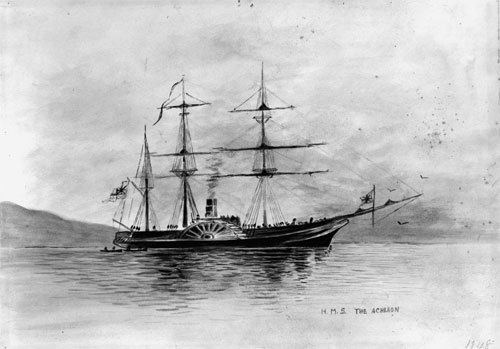Succeeded by HMS Gorgon | Preceded by HMS Medea | |
 | ||
Builders Portsmouth DockyardSheerness Dockyard | ||
The Hermes class were a class of four paddlewheel steam sloops built for the British Royal Navy in the 1830s. Megaera was wrecked in Jamaica in 1843, but the other three survived to be broken up, with Volcano surviving in Portsmouth as a floating engineers' workshop until 1894, giving the best part of 60 years of service.
Contents
Design
The ships were designed by John Edye to a specification by Sir William Symonds and were approved in 1834. They were built of wood, displaced 1,006 tons and had a length on the gundeck of 170 feet (51.8 m).
Propulsion
Power was provided by a two-cylinder side-lever steam engine driving paddle wheels. In Hermes this engine was provided by the Butterley Company, but the other ships had a Seaward and Capel unit fitted. The engines were rated at 140 nominal horsepower, with the exception of Acheron, which was rated at 160 nominal horsepower. Hermes had her original engine removed at Woolwich in 1840, and after she had been lengthened, in 1843 a new Maundsley 220 nominal horsepower 'Siamese'-type steam engine was fitted. This gave her a speed under power of about 8 1⁄2 knots (15.7 km/h). Pictures show Acheron with a barque rig.
Armament
All four ships were initially armed with two 9-pounder (13 1⁄2 cwt) smoothbore muzzle-loading brass guns. In 1842 or 1843 they were re-armed with a single 8-inch pivot gun and two 32-pounder (17 cwt) carronades.
Crew
They had a complement of approximately 135 men.
